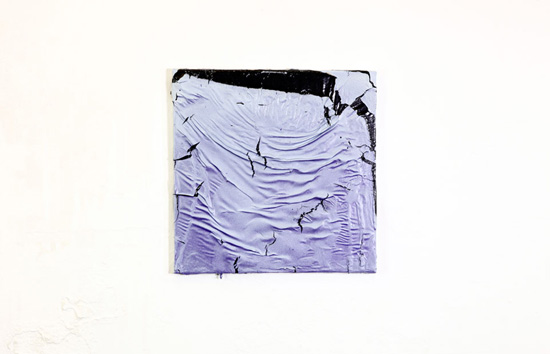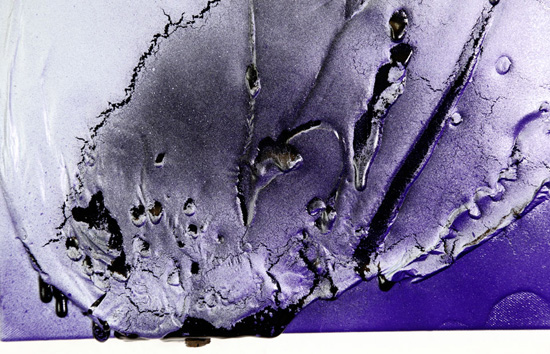I’m trying to describe the feeling I had when I first met Santiago Taccetti and saw his artwork. As he scrolled through his website showing me piece after piece I became excited about what he was doing in his art practice. Images of installations, paintings, video and prints all emphasized a similar consideration and viewpoint toward our relationship with technology and the pervasive aesthetic that has emerged. What’s incredible is that Taccetti translates this across artistic disciplines, which to me means you are onto something. His work floats on the white page of a website with the same ease that he builds a sculpture or paints. This delicate sensitivity towards contemporary aesthetics is something we are all becoming more attuned to through the web. To make a comparison I have a historical anecdote. As a kid watching way too much television I became a super critic of TV and movies. The editing, lighting, sound and costumes all spoke to me. I understood this medium naturally and could differentiate between incredibly subtle details and differences. The web is developing a similar critical and aesthetic awareness and Taccetti’s artwork translates this like a mother tongue. His work represents a certain perfection that is more than real–it is actually unreal. It is the aesthetic of the machine. And strangely after viewing his work I began to perceive the city differently. I started to see the digital aesthetic everywhere, permeating the real world.
We speak about the magical day when electronics will coexist with us in reality. But this has happened. Most of our surroundings are machine made and designed on computers. They are the by products of digital imaginations and they are born into reality. Consider how striking it is to see something made by hand in our surroundings rather than by a computer. Looking at the city from this perspective I began to question where the reality actually was and realized it was becoming a pretty blurry line. Everything started to seem like it could be digital born even the grit and graffiti. Take a look at some of Taccetti’s paintings and you will see what I mean. I wonder where the shadows and layers of paint end and whether they could be made in After Effects. It is from this point of questioning reality, technology and aesthetics that Taccetti is working in his art practice. The world is on a sort of super drive and all the materials are available for interpretation and the potential creation of an illusion. Walk into any dollar store, hardware store or IKEA, peruse the Internet or find a discarded package. You will find the influence of the computer age, the strange place in between, and you are stepping into Taccetti’s playground.
(Images courtesy of the artist)




 RSS
RSS
